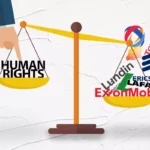Where is justice located? Is it in the law? In the courts? Is its aim retribution for harms incurred? Punishment and revenge? What role does the law play in reckoning and reconciling with human rights violations in times of mass violence?
The first people’s tribunal in the 1960s expanded our understanding of justice beyond the formal institutions of the state and into the realm of the power of the people. That first event, called the Russell Tribunal, convened by Bertrand Russell and Jean-Paul Sartre to protest US war crimes in the Vietnam War, gave precedence to a victim-centered platform that highlighted the limits of formal legal systems to address injustices and repair injuries, especially for disempowered and marginalized populations.1In recent years such non-judicial truth-telling forums have become especially important venues for victims of conflict-related sexual crimes, who often face national and international legal systems unwilling or unable to dispense justice for sexual and gender-based violence as part of mass atrocity and genocide.
In 2012 the Cambodian Defenders Project convened the Asia-Pacific Regional Women’s Hearing on Gender-Based Violence in Conflict, gathering ten women survivors to publically share their experiences before an estimated audience of 250 government officials, court officers, academics and students in Phnom Penh. Along with testifiers from Cambodia, Timor-Leste and Nepal, two testifiers from Bangladesh shared their stories of rape during the 1971 Bangladesh genocide as part of the country’s war for liberation. In each country’s case, the sexual crimes committed as part of the conflict had been neglected or sidelined in the formal justice proceedings, effectively excluding victims from transitional justice processes and redress as outlined in the UN Basic Principles and Guidelines on the Right to a Remedy and Reparation for Victims of Gross Violations of International Human Rights Law and Serious Violations of International Humanitarian Law.
While the 2012 Asia-Pacific Women’s Hearing was not a replacement for prosecutions and convictions in the formal courts as part of official transitional justice mechanisms, it offered an alternate location for victims to access a form of reparative justice that responded to the lived realities of survivors in communities that continue to ostracize, fault and dishonor them. Breaking years of silence, testifiers at the Women’s Hearing publically and effectively shifted blame and shame from victims to where reproach rightfully belongs–with perpetrators.2 The format of the Women’s Hearing allowed testifiers to publically present their experiences before a panel of experts, on their own terms and free from formal procedural and evidentiary rules that may often constrict and even silence victims.3
At the end of the testimony the expert panel and audience offered public acknowledgement and validation of these experiences, including recognizing the continuing effects of sexual violence in victims’ present lives and the role of communities in ending stigma. As sexual and gender-based violence survivors are in need of specialized support due to the shame associated with their violations, all the testifiers received psychological care before, during and after their participation, which allowed many to advance on their path to personal rehabilitation and community reconciliation. During the Women’s Hearing a message of solidarity from the Guatemalan Women’s Court of Conscience was read aloud, situating the testimony in Cambodia within a global women’s movement seeking to end conflict-related sexual crimes.
International legal scholar Dianne Otto, who served on the panel of experts for the Asia-Pacific Women’s Hearing, has pointed to what she calls the politics of listening’ that people’s tribunals evoke:
Listening that educates about the complex causes of conflict and violence, that prompts acknowledgment of the responsibility of those who are listening and encourages solidarity and action towards change.4
In much the same way, the Women’s Hearing did more than protest the inadequacies of existing law and its institutions to address women’s experiences of sexual violation; it also contributed to expanding justice beyond the law and into a community of shared responsibility and common humanity–that is, into the realm of the power of people to accomplish repair beyond retribution. While formal prosecutions and convictions cannot be replaced, justice itself may be found in the alternative, more comprehensive and victim-centered forums that create space for women’s voice to break the silence, speak the truth and be believed and validated by communities.
References
- John Duffett (ed), Against the Crime of Silence: Proceedings of the Russell International War Crimes Tribunal, Stockholm, Copenhagen (Bertrand Russell Peace Foundation 1968).
- Dianne Otto, ‘Impunity in a Different Register: People’s Tribunals and Questions of Judgment, Law and Responsibility’ in Ken Davis, Karen Engle & Zinaida Miller (eds), Anti-Impunity and the Human Rights Agenda (Cambridge University Press 2015).
- See Marie-Benedicte Dembour and Emily Haslam, ‘Silencing hearings? Victim-witnesses at War Crimes Trials’ (2004) 15(1) European Journal of International Law 151.
- Dianne Otto, ‘Testimonies of Protest and Survival: People’s Tribunals and the Politics of Listening’ in Andrew Byrnes and Gabrielle Simm (eds), Peoples Tribunals and International Law (Cambridge University Press, 2016).










No Comments
Leave a comment Cancel